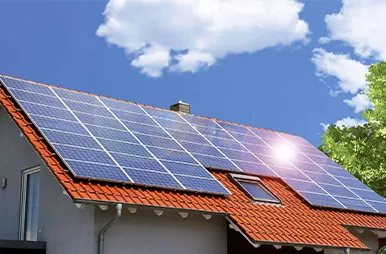Exploring Different Sizes of Available Solar Panels for Your Energy Needs
Understanding the Sizes of Solar Panels Available
Solar energy has become an integral part of our approach to sustainable living, and solar panels play a crucial role in harnessing this renewable resource. With various sizes and specifications on the market, it is vital to understand the different types of solar panels available and how their sizes can impact your solar system's efficiency and application.
Types of Solar Panels
Solar panels primarily come in three types monocrystalline, polycrystalline, and thin-film. Each type has its unique characteristics and size variations, relevant to specific applications.
1. Monocrystalline Solar Panels Made from single-crystal silicon, these panels are known for their high efficiency and durability. Typically, monocrystalline panels come in standard sizes, such as 60-cell (approximately 39 x 65 inches) or 72-cell (approximately 39 x 77 inches) configurations. While more expensive, they offer higher energy output per square foot, making them ideal for installations with limited space.
2. Polycrystalline Solar Panels Composed of multiple silicon crystals, polycrystalline panels usually feature a blue hue and are less efficient than their monocrystalline counterparts. Standard sizes also include 60-cell and 72-cell options, similar to monocrystalline panels. They are often less expensive, making them a popular choice for homeowners with larger areas available for installation.
3. Thin-Film Solar Panels These panels are made by applying a thin layer of photovoltaic material to a substrate, which can be flexible or rigid. Thin-film panels are generally lighter and can come in various sizes, often custom-made for specific installations. Common forms include building-integrated photovoltaics (BIPV), which blend into the architecture, and flexible panels suitable for unconventional surfaces.
Standard Sizes and Their Applications
The most common sizes for residential solar panels usually range from 250 to 400 watts. The wattage directly affects the physical dimensions, with higher wattage panels typically being larger. Standard dimensions for residential panels are around 65 inches by 39 inches for a 300-watt monocrystalline panel. The layout of your roof or the intended application will guide the chosen size.
- Residential Installations For homes, the average roof has space for about 20 panels, resulting in a total power output ranging from 6 kW to 8 kW. This environment typically favors the use of monocrystalline panels due to their efficiency and space requirements.
sizes of solar panels available

- Commercial Installations In commercial settings, larger systems can accommodate hundreds of panels, often using both monocrystalline and polycrystalline panels depending on budget and efficiency needs. Sizes can be adjusted based on the specific roof or ground area available.
- Utility-Scale Installations For utility-scale solar farms, large-format panels, often with higher wattage, are used. These might include newer technologies that enable improved efficiency and output, such as bifacial solar panels, which capture light on both sides.
Considerations for Choosing Panel Size
When selecting solar panels, several factors should be considered
1. Space Availability Maximize your energy production based on the space available. Smaller roofs may benefit from higher efficiency panels, while larger spaces may afford the use of more budget-friendly options.
2. Energy Needs Understand your energy consumption patterns to determine how much wattage you need and how many panels will satisfy that demand.
3. Aesthetics Some homeowners prefer the look of certain panel types or sizes. The choice can influence the curb appeal of a property.
4. Installation Costs Larger panels may reduce the number of necessary installations but could increase installation complexity. It's essential to consider both panel cost and installation expenses when planning your solar project.
Conclusion
In summary, the sizes of solar panels available today are diverse and tailored to meet various energy needs and installation scenarios. By understanding the types, dimensions, and applications of different solar panel sizes, consumers can make informed decisions that maximize their investment in solar energy. As technology continues to advance, the efficiency and options for solar panels will only expand, further encouraging sustainable and eco-friendly lifestyles.
-
Unlocking Energy Freedom with the Off Grid Solar InverterNewsJun.06,2025
-
Unlock More Solar Power with a High-Efficiency Bifacial Solar PanelNewsJun.06,2025
-
Power Your Future with High-Efficiency Monocrystalline Solar PanelsNewsJun.06,2025
-
Next-Gen Solar Power Starts with Micro Solar InvertersNewsJun.06,2025
-
Harnessing Peak Efficiency with the On Grid Solar InverterNewsJun.06,2025
-
Discover Unmatched Efficiency with the Latest String Solar InverterNewsJun.06,2025







